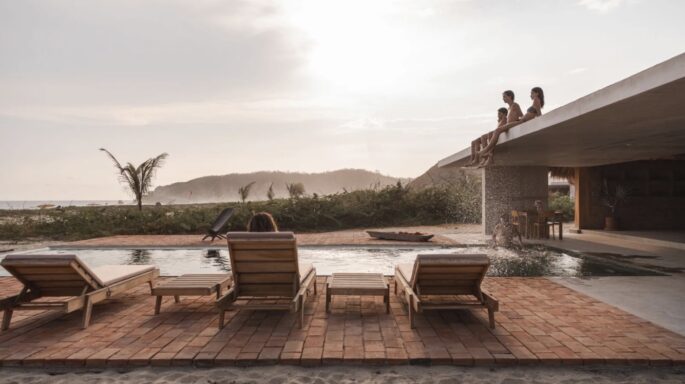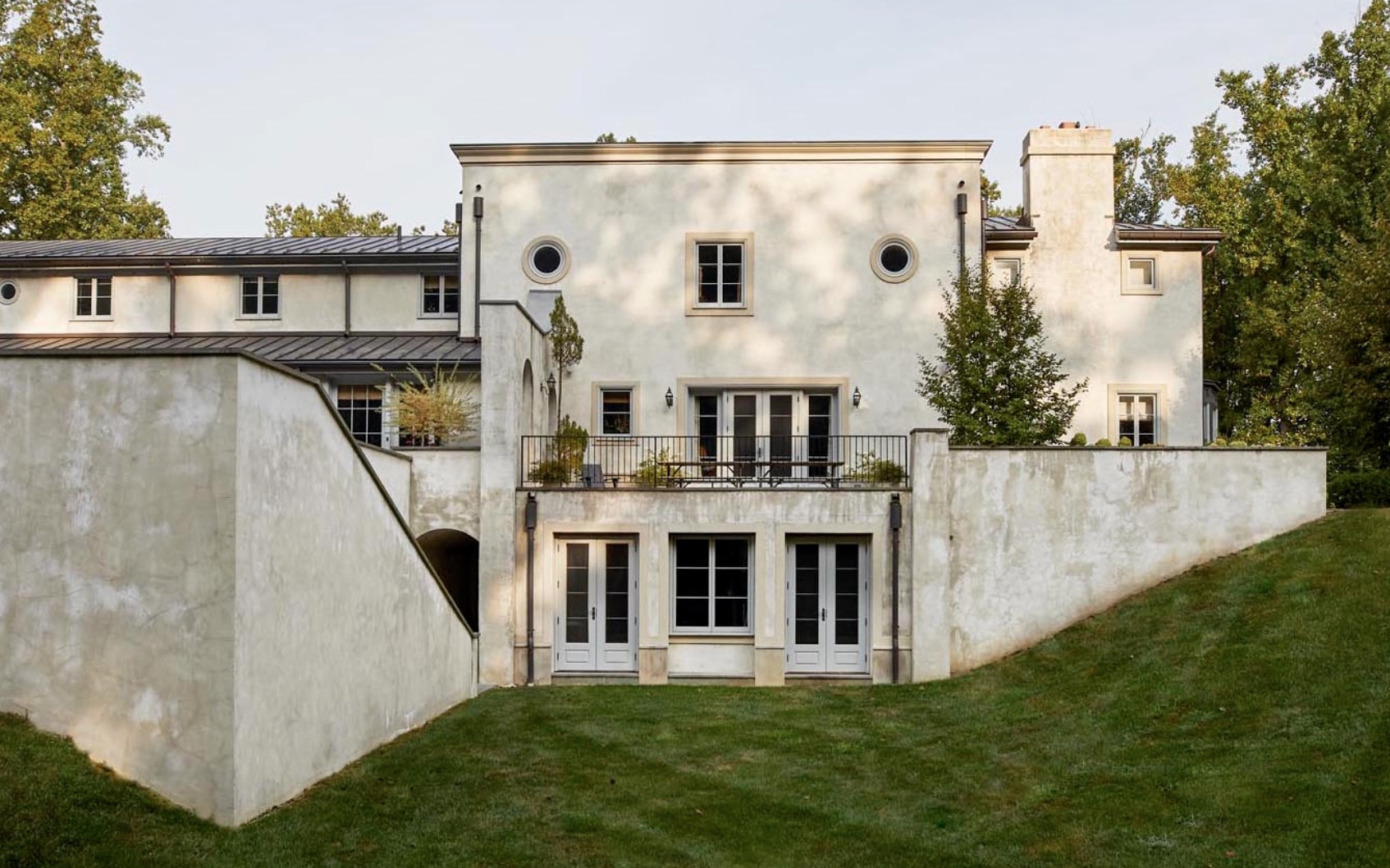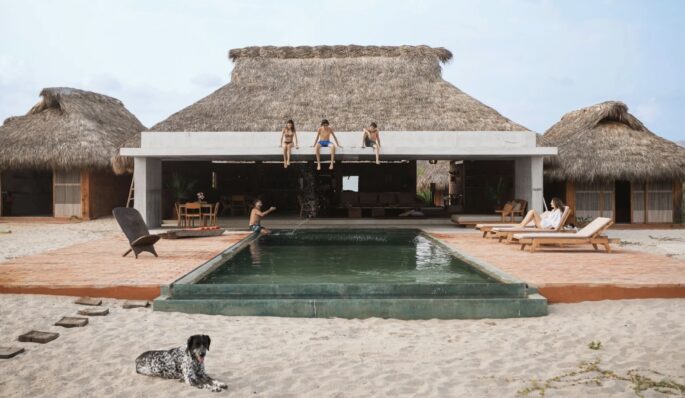Wherever you have spent lockdown, spending most of the year within the same set of walls has offered us all the opportunity to reflect on what makes the perfect interior, one that fulfils the two ideals of aesthetics and ease.
The one certainty in these uncertain times is the importance of our home being somewhere we really want to be, somewhere that offers both comfort and joy.
Will our kitchen, dining and living spaces still blur together, or will walls make a comeback? Will generations increasingly begin living under the same roof? After the pandemic, will architects design every entryway with a built-in handwashing station? Here’s how the lockdown has changed what we want from our homes. Read more, ‘Top 10 Design Trends For 2021: Meet Your New Home.’
Design has been influenced by the pivots that have taken place since March, and we are now focused on health, safety and stylish solutions for the utility of our spaces with the need to design space for multiple generations living under one roof, as well as for shared meals and for learning and working from home. Spending more time at home with changing priorities means we want to create rooms that support the new ways families find themselves interacting, and a wealth of ideas for improved living. Read more, ‘The Dream Home Has Changed.’
Increasingly, people want to re-create the indulgent experiences they’re missing now that travel and other shared experiences are on hold.
We were heavily into a period of so-called experiential luxury, which values experiences over goods. But now we will see a shift back toward luxury goods, as our ability for travel is curtailed. Read more, ‘9 Design Trends We Will Be Seeing In The Very Near Future.’
People want their homes to service every last need—from home theatre rooms to spas to hairdressing salons and meditation spaces. And everyone wants the latest, greatest home gym equipment. Coveted goods include high-tech infrared saunas workout equipment like Peloton bikes and treadmills; home salon equipment like the Emperor barber chair by AGS Beauty and the hydraulic facial chair by Pibbs; and state-of-the-art projectors and speakers.
We are looking for enduring design and performance, and also innovation. They want timelessness that will weather cultural and design upheavals.
We are all seeing old materials with new eyes. We increasingly consider woods, metals, and stones as the base of an interior . They ground the design, wear beautifully, and offer warmth and a sense of the hand to simple details.
I am loving the fact that people are more open to colour and art that have meaning to them. Many are also interested in acquiring art pieces by young, well-known artisans. Furniture collectives are solid resources for carefully curated items from makers, with a balance of forward-thinking aesthetics and refined craftsmanship.
People are not paying much attention to current design trends, but looking for interiors that make them feel happy.
There’s a renewed focus on sustainable resources, with a focus on handmade and extremely high-quality materials. Think large dining tables with natural wood grains and live edges; elegant, recycled pressed-cellulose lighting and high-quality recycled leather furniture and decor items from auction houses. The stories of these products will be shared as our values and our virtues are new arenas to discuss luxury. Read more, ‘How Coronavirus Will Change Our Homes in the Next Decade.’

As travel has waned, people are seeking to create a holiday vibe at home by making outdoor areas comfortable, functional, and ultra-luxe. Artist Bosco Sodi’s family retreat on the Mexican coast via Architectural Digest.
Sustainability, health, and wellness all rank high in terms of current priorities. People are interested in making more responsible design choices—namely, by incorporating biophilic elements. They want to select furniture, fixtures, and equipment made of natural materials. For example, instead of using natural wood panels that were out of budget, perhaps a PVC-free Type II wallpaper that looks like natural wood might be used. By including this pattern, the brain connects to nature, improving satisfaction in productivity and overall happiness, and lowering blood pressure and stress hormones in the bloodstream. Read more, ‘The 7 Most Impractical Design Trends of The Last Decade.’
Even prior to the pandemic, the environmental crisis had pushed many to consider their relationships with nature, outdoor space, water as a resource, selection of land, and local climate concerns.
And people’s safety and welfare are of the utmost importance. Designers are being asked to offer all the latest tech for home health and well-being,” Martin Bullard says. “That includes new air filtration systems, the latest infrared lighting water purification, and lighting systems that replicate circadian rhythms.”
As people spend more time at home, with the outside world seemingly ever more chaotic, it’s absolutely vital that residential spaces evoke peace, calm, and contentment. Designers must engage in conversations with clients about what brings them joy as individuals and as a family. Simple things have become the focus. Many people are cooking for the first time, and realising their kitchens are beautiful but don’t work. These scenarios provide opportunities for designers to offer refreshes in terms of new appliances and enhanced efficiencies.

People are increasingly designing their outdoor spaces be a lavish garden oasis that provides them with a holiday-at-home experience. Image of artist Bosco Sodi’s family retreat in Mexico via Architectural Digest.
Appliances have experienced a renaissance. The selection process had been rote: a choice between slick, newfangled, untested technology or fusty, durable, high-performance. Blue-chip appliance companies have incorporated new, relevant technologies such as steam, induction, smart zones, etc. And newer companies have learned the appeal of classic lines and seamless installation details. In all aspects of selection, aesthetics are important; cosmetics are not.
As travel has waned, people are seeking to create a holiday-at-home experience by making outdoor areas comfortable, functional, and ultra-luxe.
“We are being asked to make sure all outdoor spaces become the most inviting entertaining spaces for year-round use with fully loaded outdoor kitchens and bars, TVs, and screens to make it as luxurious as possible,” says Bullard, who designed the backyard of his own Mediterranean-style villa in West Hollywood to be a lavish garden oasis.
Many have retreated to their secondary or tertiary residences. Main houses, pied-à-terres, beach houses, and country houses felt temporal—an exquisite place to lay your head for a few days. Now their relationship is much more permanent. These spaces need to function as alternates to primary residences. People are looking for full luxury interiors at second and third homes in more rural or oceanside areas with the same everything-you-could-wish-for design ethos, thinking more of a permanent-residence interior rather than just a holiday vibe. Whether the house or apartment is a homestead, or a retreat, folk yearn to have these functions embedded in an elegant, seamless vision.
So, if you’ve identified changes that would enhance your living, now is the moment to implement them.



